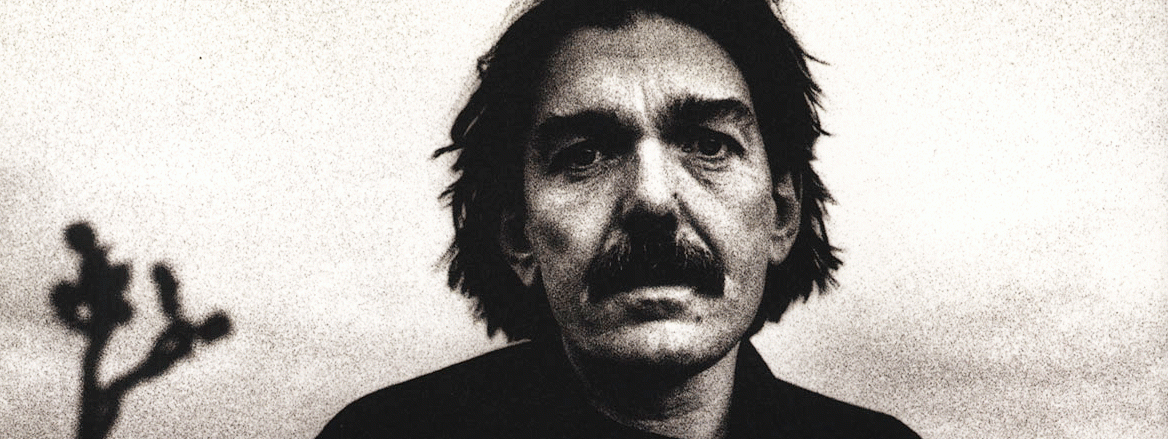The Collected Paintings of Don Van Vliet, the once (and future?) Captian Beefheart
A reporter from New York Rocker once asked poet, painter and composer Don Van Vliet – better known to many as the influential enigma of electrified clamor, Captain Beefheart – how he produced his scrawling, free-form saxophone solos. “I just paint through it,” came the Captain’s bristly, elusive reply.
The first full-scale reminder of Van Vliet’s existence since his musical retirement in 1982, Stand Up to Be Discontinued (Cantz/136 pages/$40, $60 with special edition CD) further expresses that unkempt synaesthesia. Smeary and blurt-like, these jagged panels of frenzied eye music – seen here in an ambitious, if only sporadically representative, 70 reproductions – are as unpredictable and flavor-some as any of Beefheart’s horn solos. Toss in the book’s assorted essays on the Captain (including the Rocker article) and its six-track CD of (tremulously) spoken poetry, and this volume is as close to a solo album from the Magic Bandleader as we’re ever likely to come.
Like his colliding polymelodic music, Van Vliet’s best paintings work in a variety of simultaneous directions. Lines and figures race the viewer’s eye around the canvas, revealing perspectival possibilities, oblique vistas and hidden faces, then scurry under a mound of frosting-thick impasto. Styles meet and merge: de Kooning’s genital-pink smudges erupt next to whimsical Klee-like animals, and unprimed canvas peeks out from under sour color fields like an oily workshirt. In the toothsome triptych Dylisheus (1984) and the book’s cover painting, Fur on the Trellis and Just up Into the Air (1985), Van Vliet’s subtle color blends, fervid brush-work and carefully balanced composition suggest a savage, if sunny, Francis Bacon.
Even the paintings that appear hasty (or perhaps abandoned) aren’t without their engaging idiosyncracies, thematic consistencies or “fine” art precursors. In the spare Tug (1990), a blobby raven flops through the sky, part Heckle and Jeckle, part New York School abstract-expressionist Franz Kline. Overhead, a calligraphic sun is broken into lumpy, irregularly unraveled lines that hang in the air like a masticated memento of Vincent Van Gogh. Cats, crows and other fuzzy shapeshifters recur throughout, familiar totems of the artists’ eco concerns (as in the pollutant-obsessed “Blabber ‘n Smoke” or the “odeecology” lament, “Petrified Forest,”), as well as reminders of his childhood hobby: sculpting sea creatures out of soap bars.
Several paintings derive their titles from Beefheart’s lyrics – Japan in the Dishpan (sic), Parapliers the Willow Dipped (from “Bellerin’ Plain”), Circles Don’t Fly, They Float (from “Hey Garland, I Dig Your Tweed Coat,” a 1982 song from a 1970 poem). But fans of his album cover art will recognize only 1978’s Green Tom from Shiny Beast (Bat Chain Puller). And while the book is strong on novelty, it fails to suggest the paintings’ physically impressive scale (many are five feet tall) or the full span of the painter’s career. 60 reproductions are drawn from the late ’80s – a disappointing period of straight-from-the-tube pigments and soggy contours – but the formative ’60s rate only five and the tantalizing color-rich ’70s, a measly three.
Lopsidedness is the book’s most disappointing mainstay. Anton Corbijn’s beautiful photographs of the aging Van Vliet are welcome inclusions, but A.R. Penck’s moronically minimal 10-page poem, “For Don Van Vliet,” is not. Is the CD’s fourth track actually titled “Safe Sex Drill” (as listed on page 131) or the more discographically resonant “Safe Sex Milk,” as the copyright notation insists? And did no one think to interview the artist himself for this potentially definitive collection – or to compare this lifelong Californian’s work to any of the state’s myriad other landscape impressionists?
No sensible Beefheart devotee would let these quibbles stand in their way. But just as the book’s title ironically echoes the Captain’s frequently remaindered vinyl past, this flawed volume’s high-ticket price tag, low-profile distribution and occasional aesthetic lapses will probably keep anyone from laughing just yet.
Chuck Stephens
